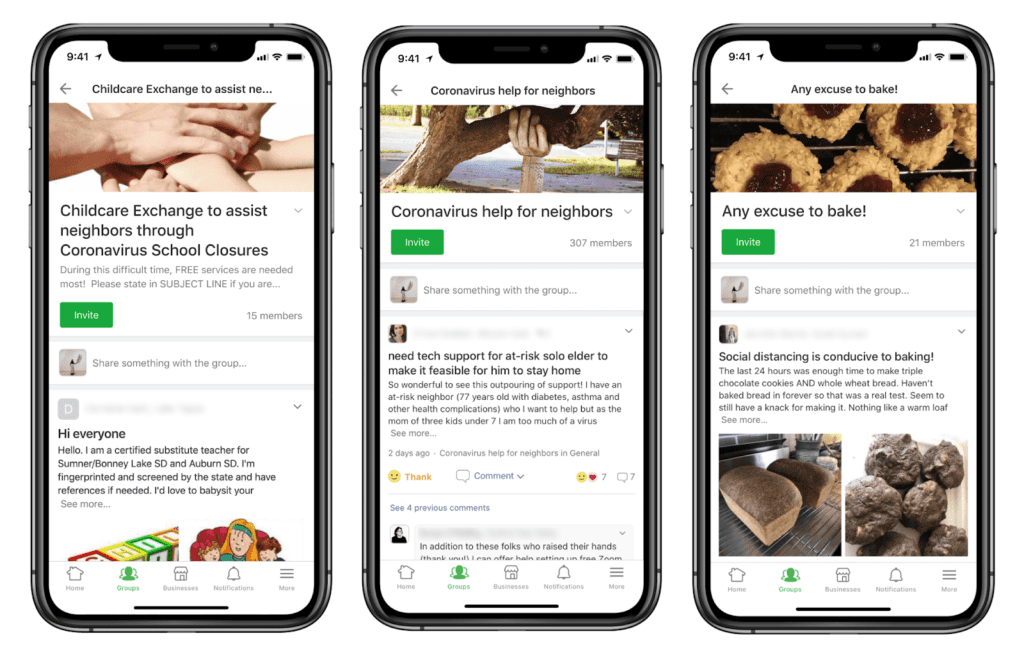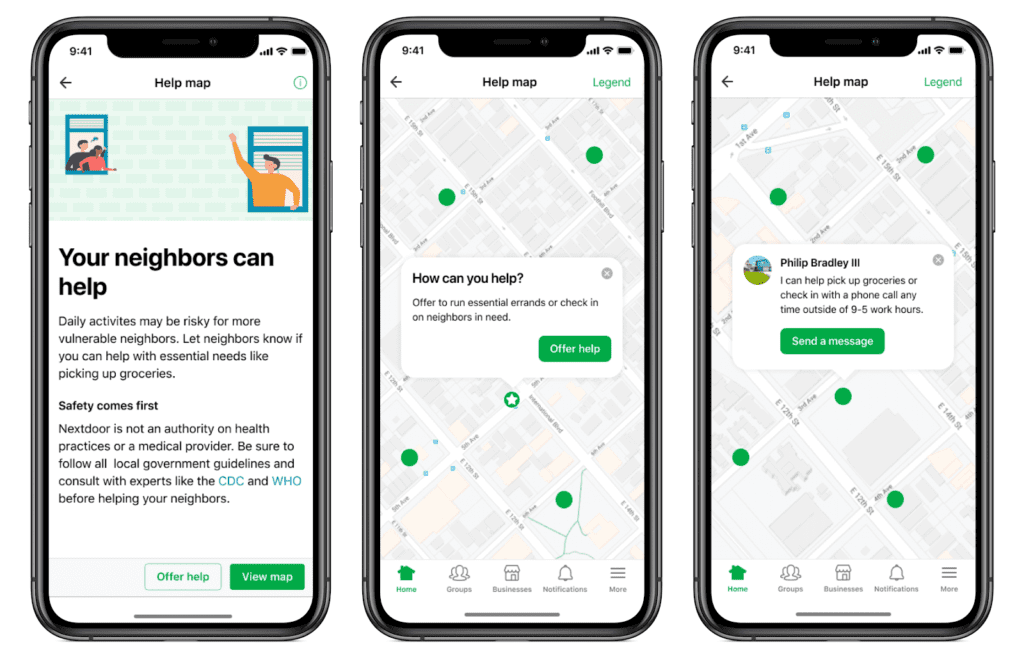
Although the COVID crisis has many reaching out online for global support and entertainment (and sometimes both), people are also seeking for updates and assistance on a local level.
Nextdoor, as a social app that specializes in forging neighborhood connections, has served as an additional arm for disseminating localized information. While many organizations are sending audiences to the national CDC coronavirus website as a centralized resource, local government authorities are offering various services and updates specific to individual zip codes.
Nextdoor is also facilitating neighborly assistance, like grocery pickup for elderly residents, information on which stores are carrying home medical supplies (thermometers, Tylenol, etc.). While there is a fair amount of anxiety expressed by users—“Are you ready to #flattenthecurve through September?”— other posters are asking where and how they can volunteer to bring food and supplies that need it most.

In March, Nextdoor saw its global daily active members increase more than 80 percent month over month, as reported by the app’s communications team.
The app has launched several features to help users more easily connect around the pandemic, including:
- Nextdoor Groups. Neighbors can better organize around topics and helping each other out. Users can create a Group just their neighborhood, nearby neighborhoods, or city-wide.
- Help Map. An interactive map of a given neighborhood. Users can mark themselves as available to pitch in for neighbors who need assistance. The can also add themselves to the map, detailing the errands or support they need help with.

Logging into Nextdoor during the crisis, one senses a return to a more innocent time in social media history, when users took to Facebook, LiveJournal or Angie’s List to post their thoughts and feelings openly, exchange information about local contractors and services or ask for help from a small group of peers. This is in stark contrast to an online environment where brands and individual users are often concerned more with building their audiences, winning engagement or creating an idealized, but ultimately false online persona.
In a statement, Nextdoor CEO Sarah Friar shared the brand’s mission behind the initiative:
“The power of proximity means everything. Nextdoor was built to bring neighbors together — this is important in good times and essential in times of need. People across the globe are reaching out to their neighbors on Nextdoor with kindness and offers of help.”
Many organizations and communications leaders have hit the pause button on fundraising, events, product launches or marketing efforts, but are eager to pitch in with social good efforts on a local or global level. For inspiration, here are some of the ways Nextdoor users have leveraged the platform amid the coronavirus spread, according to Nexdoor reps:
- Checking in regularly with elderly neighbors and those with underlying medical conditions
- Volunteering to pick up groceries, medications or run errands for those who are quarantined, or generously sharing their own resources
- Encouraging support local businesses by ordering take-out or buying gift certificates
- Collecting donations to ensure food banks and other nonprofits can continue to serve the community
- Organizing groups for parents to stay connected during school closures, or around hobbies to keep entertained
- Coordinating childcare, babysitting and pet-sitting
Follow Sophie: @SophieMaerowitz
